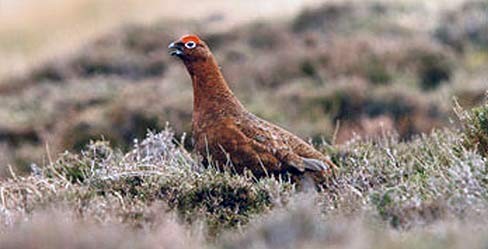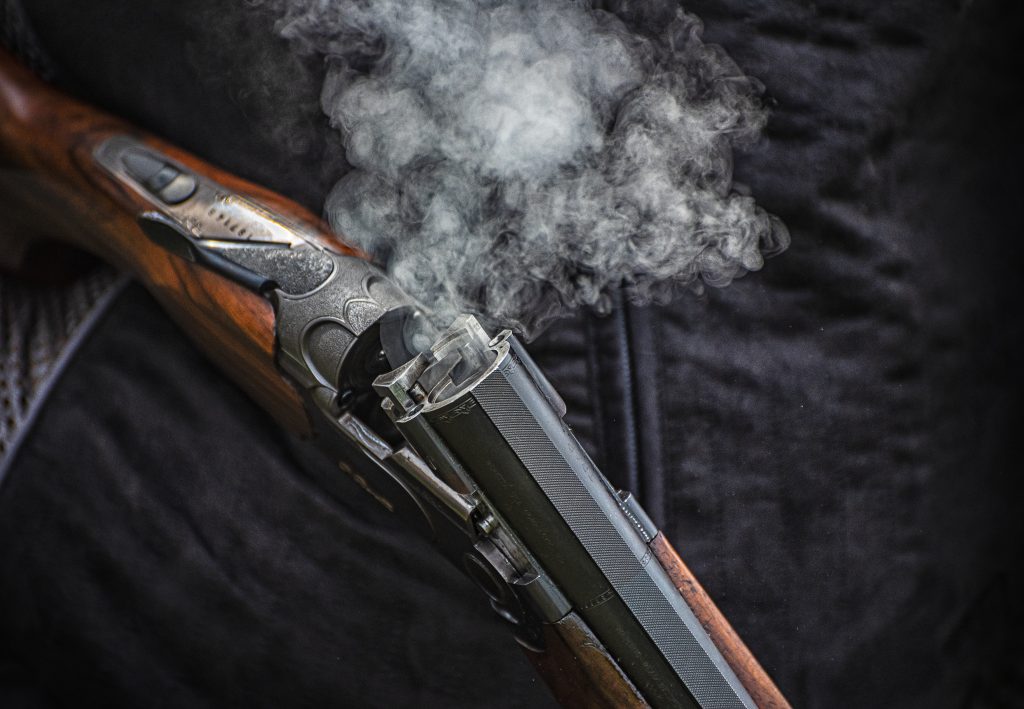Win CENS ProFlex DX5 earplugs worth £1,149 – enter here
The season’s final farewell
<strong>As Scotland prepares to enact a new wildlife bill, Graham Downing reflects on the ancient game laws that it will consign to the dusty pages of history</strong>

It was a learned and intelligent party that gathered in Edinburgh on the evening of Tuesday 17 August 1773 around the table of the celebrated diarist James Boswell, latterly 9th Laird of Auchinleck. The Duchess of Douglas, Sir Adolphus Oughton, Lord Chief Baron, Sir William Forbes, Principal Robertson and Mr Cullen the advocate, had all been invited by Boswell to meet to discourse with his great friend, Dr Samuel Johnson. During the day, Johnson had been shown the sights of the city ? the Parliament house and law courts, the Royal Infirmary and, of course, the Abbey of Holyrood House. At dinner, Boswell took pains to furnish his table with the very best fare that Scotland could offer.
We gave him as good a dinner as we could, recorded Boswell in his journal. Our Scotch muir-fowl, or growse, were then abundant, and quite in season; and, so far as wisdom and wit can be aided by administering agreeable sensations to the palate, my wife took care that our great guest should not be deficient.
The muir-fowl had been freshly brought in from the country by hand barrow and pannier, perhaps from Boswell?s own family estate in Ayrshire, and was in season to be sure ? new laws enacted in far-off Westminster the previous November had decreed that the season for such game should commence on 12 August. It seems hard to believe that the same Act, passed in the 12th year of the reign of George III, is still in force today, but such is indeed the case: Scotland?s Glorious Twelfth is enshrined in a law that dates back nearly 240 years. In England, the 1831 Game Act has already passed into history, and with the passage of the new Wildlife and Natural Environment Bill, its even more ancient counterpart, the 1772 Game (Scotland) Act, will shortly do likewise, leaving Scotland?s gamebirds a mere footnote in the 1981 Wildlife and Countryside Act. So, perhaps it is time for a moment of reflection, a doffing of tricorns to mark the passing of so ancient a Statute and one which has had such significance in the history of Scottish sport.
A period of rapid change
In the third quarter of the 18th century Scotland was a place in which the old way of life was changing fast. The disastrous Jacobite rising of 1745 had altered the political geography of the country. In the Highlands, the clan system had been swept away ? lands had been forfeited by the Jacobite chiefs and vested in those who had had thrown in their lot with the King.
Farming and the management of the countryside was changing, too, and time-honoured patterns of communal husbandry were giving way to commercial agriculture, mechanisation and selective stock breeding. The ?Highland clearances? ? the enforced depopulation of the Scottish highlands ? were still in the future, but talk of global emigration was in the air. As Boswell records: Emigration was at this time a common topic of discourse. Dr Johnson regretted it as hurtful to human happiness: ?For,? said he, ?it spreads mankind which weakens the defence of a nation, and lessens the comfort of living. Men, thinly scattered, make a shift, but a bad shift, without many things. A smith is 10 miles off: they?ll do without a nail or a staple. A taylor is far from them: they?ll botch their own clothes. It is being concentrated which produces high convenience.
For ordinary people, however, emigration was directed as much to the towns as to the colonies, for in rapidly growing Edinburgh and Glasgow, commerce, trade and industry were booming and there was a huge and growing demand for labour. People who had farmed the land for generations turned their back on the countryside to seek their fortunes in the city. There is a parallel to Scotland?s economic revolution in what is happening today as China converts from an agrarian to an industrial economy. For Glasgow, read Guangzhou, for Edinburgh, read Shanghai.
Harsh penalties
Across Scotland the King?s writ ran deep and the 1772 Act for the more effectual Preservation of the Game in that part of Great Britain called Scotland was no exception. It decreed the seasons for taking game in a language that appears quaint to modern ears, but in words which then and now threatened awful retribution to offenders: That every Person who shall wilfully take, kill, destroy, carry, sell, buy, or have in his or her Possession, or use any Muir Fowl or Tarmagan, between the Tenth Day of December and the Twelfth Day of August in any year; or any Heath Fowl, between the Tenth Day of December and the Twentieth Day of August in any year; or any Partridge, between the First Day of February and the First Day of September in any year, or any Pheasant, between the First Day of February and the First Day of October in any year; shall, for every bird so taken, killed, destroyed, carried, bought, sold, found, or used, forfeit the sum of Five Pounds Sterling. And in case of not paying the Sum decreed within the Space of ten days after Conviction by a final Sentence, shall suffer Imprisonment for Two Months for each Five Pounds Sterling thereof.
A fiver a bird might sound trivial today, but this was not the case in the Scotland of the 1770s. Calculated against the tenpence that a farm labourer could expect to receive at the time for a day?s wages, the fine for taking a gamebird out of season translates to around £5,500 in modern currency, which puts into a better context the two months? prison sentence for the non-payment of a fine.
Of course, no farm labourer could expect to be allowed to take game, whether in season or out, for only those persons qualified by rank or title were permitted such a privilege. The Game Licence ? the last vestige of authority handed down from the Crown to such persons ? has already disappeared from England and will vanish from Scotland alongside the 1772 Act.
Closer reading of the Act highlights a couple of other points of interest. First, muir-fowl translates from the Scots language as red grouse, and that the descriptions ?muir fowl? and ?growse? were interchangeable is evident from Boswell?s description of the menu he laid on for his eminent guest. It is interesting to note, however, that the English equivalent ?moorcock? was in common currency south of the Border. Heath fowl, of course, translates to ?blackgrouse?, and in those enlightened times the initial ?p? of ptarmigan was not so much silent as absent.
Second, I long ago lost count of the number of shooters who have asked me why the seasons for shooting partridges and pheasants start respectively on the 1 September and 1 October but finish not on the last day of January, but 24 hours later, enabling one to shoot a February bird. The clue lies in the words between the First Day of February and the First Day of September (or October) in any year. Whether or not the Lords Spiritual and Temporal when passing His Majesty?s law intended it to be so, they nevertheless decreed that the close season should fall between the two dates.
No doubt the Edinburgh glitterati were amused and enlivened by Dr Johnson?s wit that evening in 1773, and it is hard to imagine that the dinner-table talk did not turn at some point to grouse and grouse shooting, at that time a leisurely pursuit conducted with flintlock guns and pointing dogs.
Only five days after the start of the season, in the days of horse-drawn travel, with no helicopters to airlift the game from the moor to the kitchen, the birds that they consumed must surely have been among the first that year to have been served in the salons of the Scottish capital, so perhaps the spirit of that annual race by our premier hotels and restaurants to serve grouse on the evening of the Twelfth might be older than we think. By the time that I invite my shooting guests to enjoy the first birds of the season around a dinner table in Invernessshire this coming August, the 1772 Game (Scotland) Act will be no more, but I, for one, will most certainly be raising a dram to its memory.
Related Articles
Get the latest news delivered direct to your door
Subscribe to Shooting Times & Country
Discover the ultimate companion for field sports enthusiasts with Shooting Times & Country Magazine, the UK’s leading weekly publication that has been at the forefront of shooting culture since 1882. Subscribers gain access to expert tips, comprehensive gear reviews, seasonal advice and a vibrant community of like-minded shooters.
Save on shop price when you subscribe with weekly issues featuring in-depth articles on gundog training, exclusive member offers and access to the digital back issue library. A Shooting Times & Country subscription is more than a magazine, don’t just read about the countryside; immerse yourself in its most authoritative and engaging publication.







